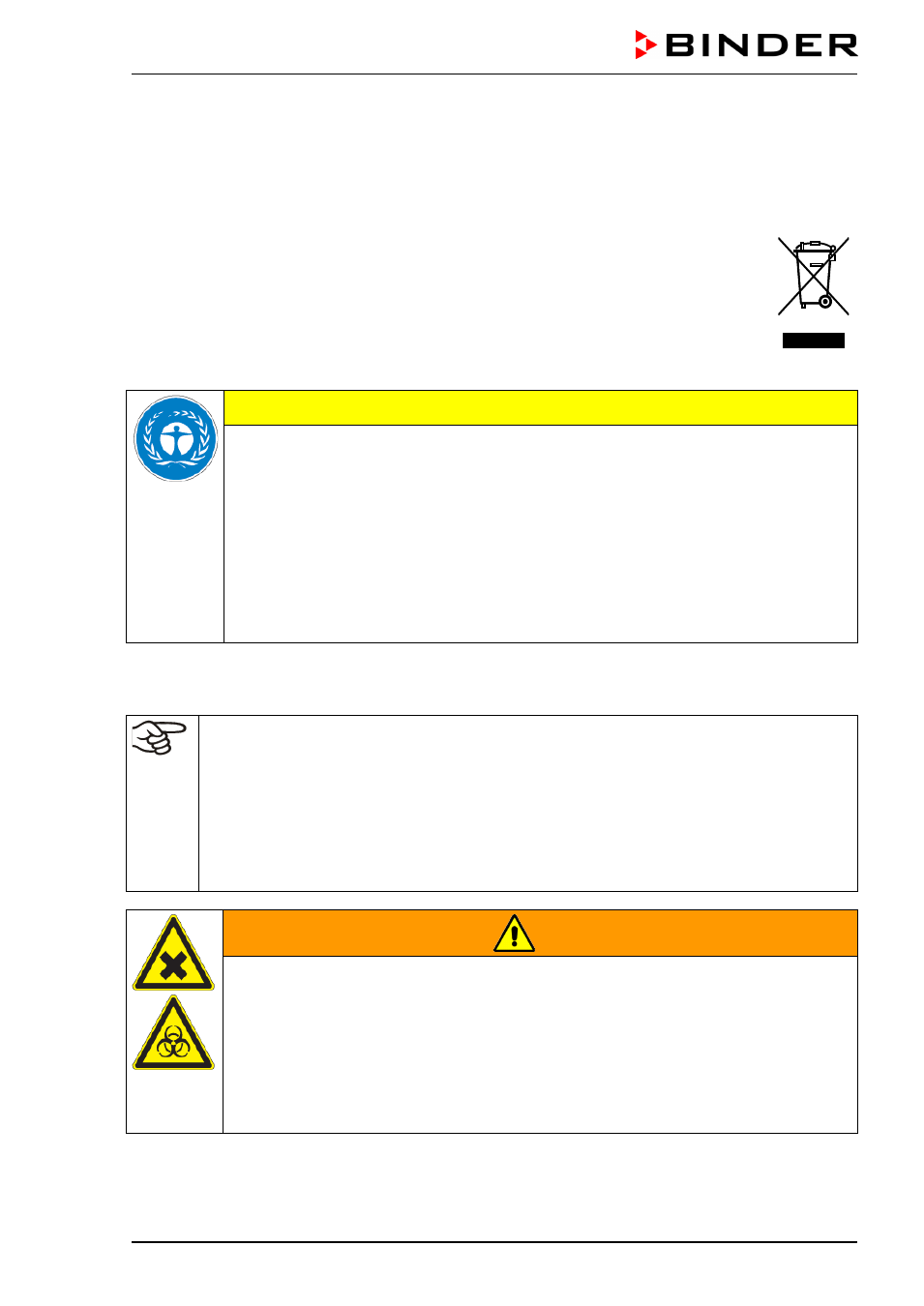Caution, Warning – BINDER MK 115 User Manual
Page 90

MKF + MKFT (E3.1) 07/2014
page 90/114
18.4 Disposal of the unit in the member states of the EC except for the Federal
Republic of Germany
According to directive 2002/96/EC of the European Parliament and of the Council on waste electrical and
electronic equipment (WEEE), BINDER devices are classified as “monitoring and control instruments”
(category 9) only intended for professional use“. They must not be disposed of at public collecting points.
The alternating climate chamber MKF / MKFT bears the symbol for the marking of electrical
and electronic equipment manufactured / placed on the market in the EC after 13 August
2005 and be disposed of in separate collection according to the directive 2002/96/EC on
waste electrical and electronic equipment (WEEE). WEEE marking: crossed-out wheeled
bin with solid bar under.
At the end of the device’s service life, notify the distributor who sold you the device, who will
take back and dispose of the unit according to the directive 2002/96/EC of 27 January 2003
on waste electrical and electronic equipment (WEEE).
CAUTION
Violation against existing law.
∅
Do NOT dispose of BINDER devices at public collecting points.
Have the device disposed of professionally at a recycling company that is certified ac-
cording to conversion of the directive 2002/96/EC into national law.
or
Instruct the distributor who sold you the device to dispose of it. The agreements apply
that were agreed with the distributor when purchasing the unit (e.g. his general terms of
payment and delivery).
If your distributor is not able to take back and dispose of the unit, please contact
BINDER service.
Certified companies disassemble waste BINDER equipment in primary substances for recycling accord-
ing to directive 2002/96/EC. The devices must be free from toxic, infectious or radioactive substances in
order to eliminate any health hazards to the employees of the recycling companies.
Prior to handing the unit over to a recycling company, it is the user’s responsibility that it is
free from toxic, infectious or radioactive substances.
•
Prior to disposal, clean all introduced or residual toxic substances from the unit.
•
Prior to disposal, disinfect the unit from all sources of infection. Be aware that sources of
infection may also be located outside the inner chamber.
•
If you cannot safely remove all sources of infection and toxic substances from the unit,
dispose of it as “special” waste according to national law.
•
Fill out the contamination clearance certificate (chap. 21) and enclose it with the unit.
WARNING
Contamination of the device with toxic, infectious or radioactive substances.
Danger of intoxication.
Danger of infection.
∅
NEVER take a unit contaminated with toxic substances or sources of infection for recy-
cling according to directive 2002/96/EC.
Prior to disposal, remove all toxic substances and sources of infection from the unit.
Dispose of a unit from which all toxic substances or sources of infection cannot be safe-
ly removed as “special” waste according to national law.
